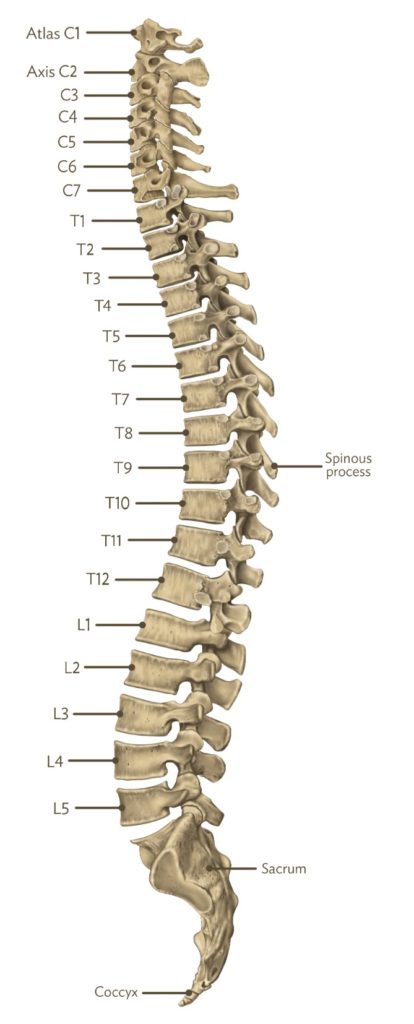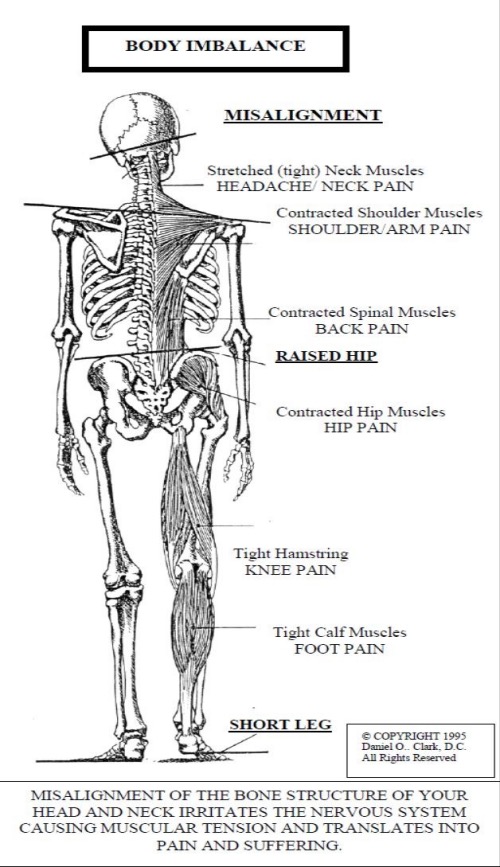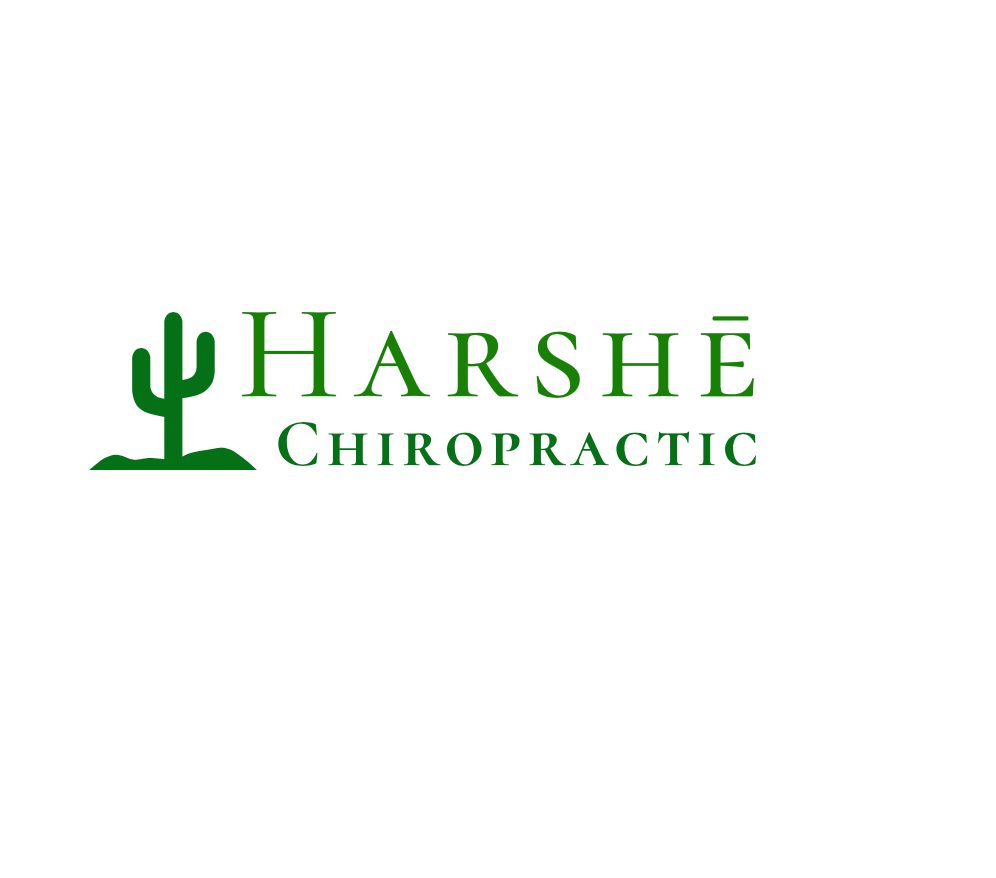Most people have had a parent, usually their mother, tell them to stand up straight or to sit up straight. That’s all well and good, and you probably did as you were told—until you became distracted by someone or something else. Then, that good posture you were voluntarily maintaining involuntarily returned to a slouching, slumping, tilted, twisted manner. And then you were back to where you started with a parent saying something along the lines of, “I thought I told you to quit slouching!”
Well, I’m here to tell you that your poor posture may not be entirely your fault.
Now, don’t get me wrong—I’m not saying you’re blameless in your poor posture. I’m very big on personal responsibility, and depending on how we feel, much of it can be traced back to what we did or did not do in order to get to our current state, good or bad.
What I am saying is that bad posture of yours has a lot more components to it than just simply forgetting to stand up or sit up straight.
Spinal curves and everyday life
 Everyone has seen pictures of a spine. It is shaped loosely like an S, with two different sets of essential curves in the spine, either lordosis (where the convexity of the curve faces forward) or kyphosis (where the convexity of the curve faces backward).
Everyone has seen pictures of a spine. It is shaped loosely like an S, with two different sets of essential curves in the spine, either lordosis (where the convexity of the curve faces forward) or kyphosis (where the convexity of the curve faces backward).
The cervical spine (neck) and lumbar spine (low back) have lordotic curves.
The thoracic spine (upper and mid back) has a kyphotic curve. Additionally, the sacrum, which consists of four fused sacral vertebrae, has a kyphotic shape to it.
When sitting in front of a computer, the lordosis in our neck straightens out and may even reverse, and the kyphosis of our thoracic spine increases immensely, especially when we’ve been staring at the computer screen for a lengthy time and our shoulders begin to round and our upper back begins to burn with fatigue. The lumbar spine will also straighten, and in most cases of poor sitting posture (i.e. slouching and slumping) reverse somewhat.
With many, many more people working from home now due to covid-19, they place themselves in an overall kyphotic posture staring at a computer screen for 7-12 hours a day, 4-6 days a week, 48-52 weeks per year. Considering the digital age we are entering, working at a computer is not a trend that will end anytime soon, if ever.
But it’s a trend that may need to evolve, because sitting like this for years and years will put tremendous strain on the spine. Here’s why:
The muscles on the posterior (back) side of your body (neck muscles, upper, mid, and lower back muscles, upper glutei muscles) become stretched, strained, and/or tight from the kyphotic, or flexed, posture. Conversely, the muscles on the anterior (front) side of your body will become weak and atrophy if not activated enough through regular activity and/or exercise that incorporates significant body extension into it like YWTLs or Blackburns.
I have to include texting, scrolling, or playing games on your phone. While all the above applies to staring down at the screen on your phone, the poor posture from the shoulders up becomes exponentially worse because so many people are staring straight down at their phones for lengthy periods of time, causing their neck’s posture to resemble the St. Louis arch, and inducing severe, temporary kyphosis in their cervical spine. Staring down at your phone for long periods of time, for too many months and years, will undo the curve in your neck, turning into a straight, up-and-down military neck, or even create a permanently reversed, kyphotic curve in your neck.
So as not to sound too vague, let me detail some of the things you can look forward to later on if you don’t pay attention to reversing these bad postural trends sooner than later.
Initially, you’ll notice discomfort in the form of tight and burning muscles, especially between the shoulder blades and base of neck, and hitches or sharp, shooting pains in various spots in the spine, pelvis, or some other joint.
Secondly, the body will begin breaking down after years of this. I mentioned atrophied muscles above, but the vertebrae in the spine will begin to degenerate, as will the discs between the vertebrae, eventually leading to osteoarthritis and thinned disc spaces. If left untreated, arthritic bone spurs will develop and eventually cross those thinned disc spaces to connect to bone spurs of the vertebrae above and/or below to form fused vertebrae. Once this begins happening, decreased mobility, restricted joint movement, and chronic pain are the rule, not the exception.
An easy way to tell if your spinal curves are normal and healthy is to have someone take a look at your standing posture from the side. If your ear, shoulder, elbow, hip, knee, and ankle are in a straight vertical line, congratulations! Your posture is great. If any of these points are left or right of center, your posture needs some attention.
Body imbalances
Body imbalances are most often a result of spinal misalignments, and can often be traced back to a misalignment of the top vertebra in your spine, the C1 vertebra, otherwise known as the atlas. When C1 misaligns, it rocks slightly left or right, resulting in a tiled head to the left or the right.
Our bodies’ righting reflex keeps our eyes level with the horizon by balancing out our posture. In the case of a head tilting from an atlas misalignment, the shoulders will tilt up on one side or the other to compensate for the tilted head above.
The pelvis will rock and tilt to balance out what the head and shoulders are doing above, often resulting in one side of the pelvis rocking forward, the other rocking backward, and the sacrum tilting backward one way or the other. With the pelvis appearing tilted up on one side because of this twisted motion, the leg on the high side will become drawn up, making it appear shorter than the other leg when laying in a supine position. This pelvic component of the body imbalance by itself is what I’ve seen cause low back pain and sciatica more than anything else in my career.
What causes a body imbalance?
 As mentioned above, body imbalances often arise from the initial misalignment of the C1 vertebra. This is because the atlas is the only vertebra in the spine not connected to the one below it by a disc. This means it has more free motion than any other bone in the spine. In fact, when your turn your head left or right, the majority of that head rotation stems from the C1’s swiveling motion upon the C2 vertebra. This free motion of the C1 can sometimes be a double-edged sword in that it is also very susceptible to misalignment.
As mentioned above, body imbalances often arise from the initial misalignment of the C1 vertebra. This is because the atlas is the only vertebra in the spine not connected to the one below it by a disc. This means it has more free motion than any other bone in the spine. In fact, when your turn your head left or right, the majority of that head rotation stems from the C1’s swiveling motion upon the C2 vertebra. This free motion of the C1 can sometimes be a double-edged sword in that it is also very susceptible to misalignment.
A C1 misalignment can begin during birth, when the baby is squeezing through the birth canal to enter the world, or via a forceps or vacuum extraction in which the newborn baby’s neck is pulled and stretched during birth (not to mention the damage done to the shaping of the cranial bones from the forceps or vacuum). An atlas misalignment can occur when a baby is learning to crawl, and/or walk, and/or run. It is estimated that a toddler will fall between 3,000 and 4,000 times while learning to walk. It’s safe to say a spinal misalignment will occur in at least one of those several thousand falls.
Can you imagine falling that many times over the course of the next year or two? With the combination of adult weight and a higher distance to fall than a toddler, after about 50 of those falls in a couple days’ time, you might need an orthopedic surgeon, not a chiropractor!
Next comes growing up and playing, and then adolescence, where sports, and sometimes stupidity, come into play, and pain becomes inevitable. Football, jumping off a roof into a pool, soccer, and attempting a back flip into the pool and clipping your forehead on the edge of the diving board are just a few of the things teenagers do that will ruin good posture every single time.
Add in car accidents, slips or falls, and the everyday stress of being a human in this world, and everyone will suffer from a body imbalance at some point in their life.
How to know if you have a body imbalance
Posture is said to be the window to the spine. With that in mind if you want to know how your spine is doing, a simple little posture test will give you some insight as to whether your spinal health is on point or needs some attention.
Simply stand in front of the mirror in a neutral position. Take a deep breath, lower your chin to your chest, then tilt your head all the way back as if you’re trying to look at something straight above you, then return your head to neutral.
Now, look at the bottom of your ear lobes. Are they level? Is one lower than the other? If the latter is true, you have a C1 misalignment. Next, look at your shoulders. Are they level? Or is one shoulder higher than the other? If the latter is true, you probably have some misalignments in the base of your neck or upper back, maybe even a first rib misalignment underneath one or both of your trapezius muscles.
If you can tell your head and/or shoulders aren’t level, what you do or don’t do with this information could really impact your life in the coming years. Don’t leave your poor posture alone. If you do, your poor posture will certainly not leave you alone later in life.
More from the Harshē Chiropractic Blog by Dr. Brandon Harshe














